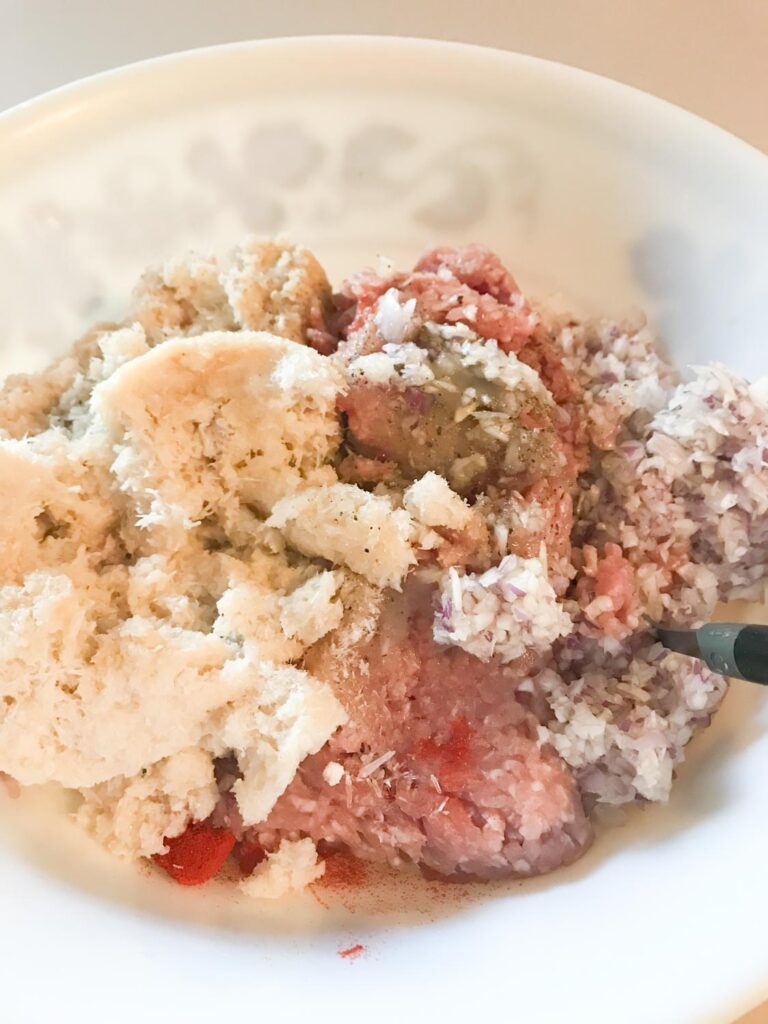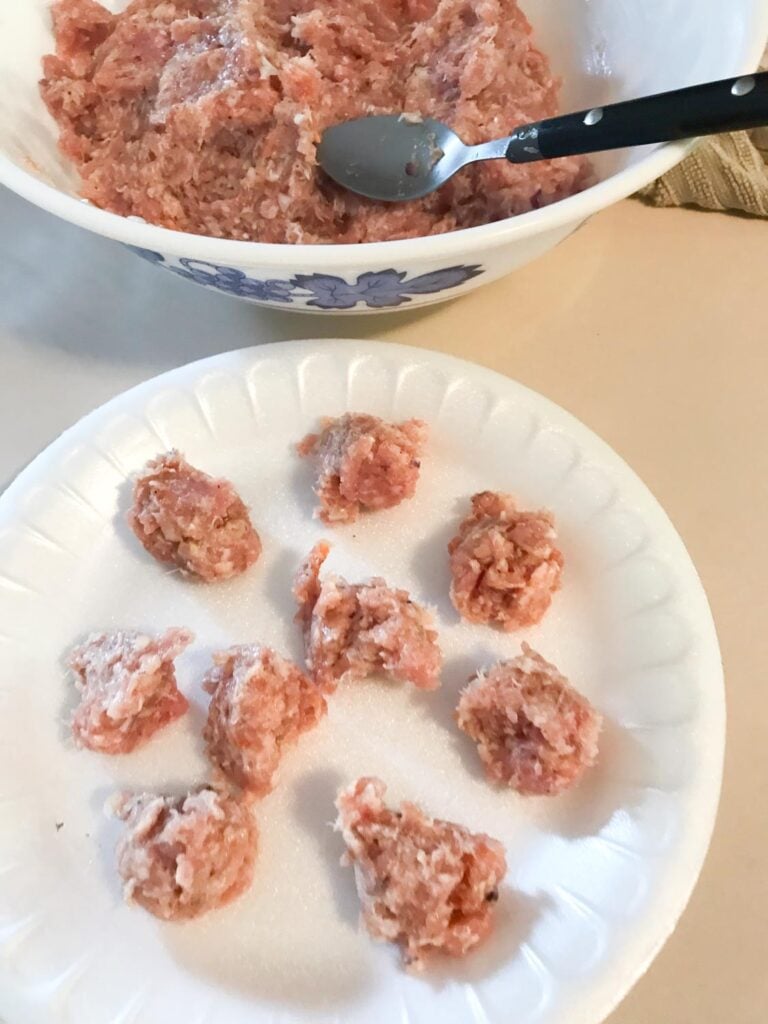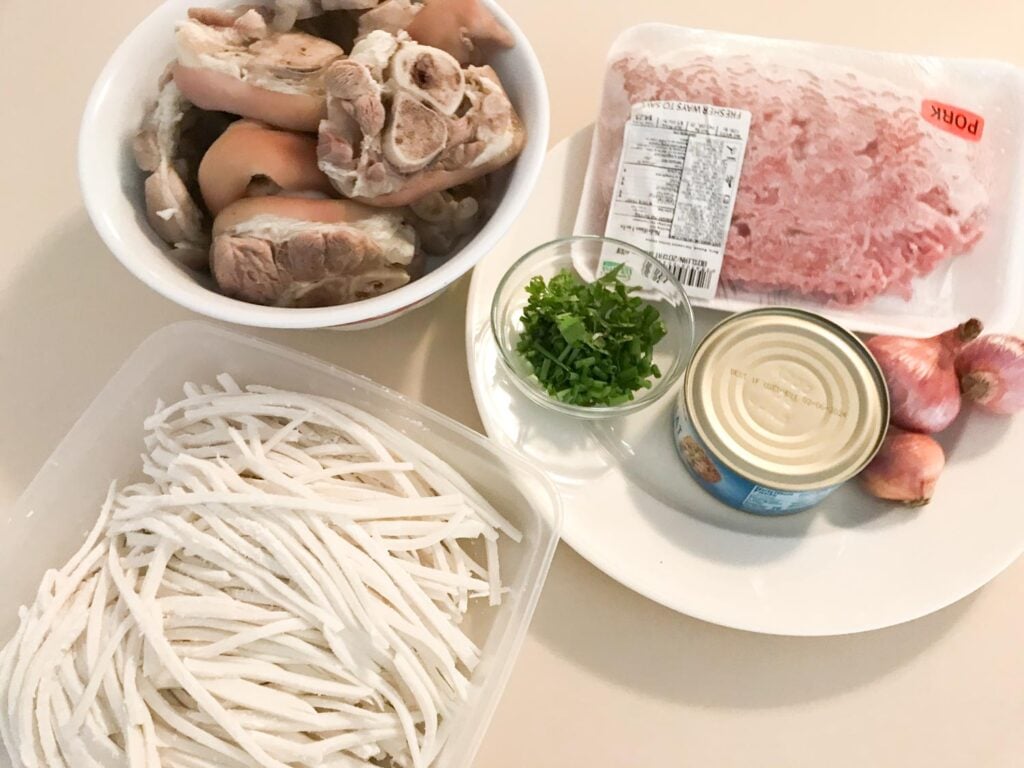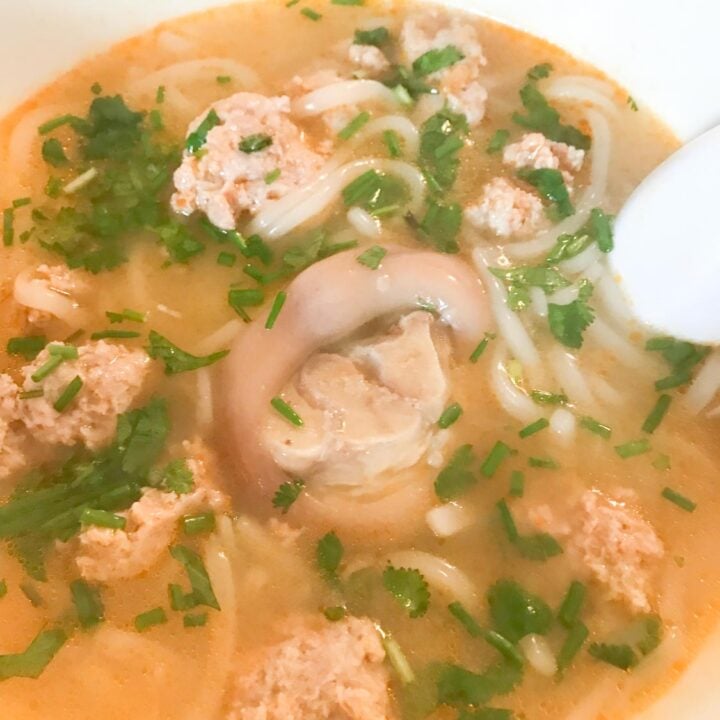Banh Canh Gio Heo, also known as Vietnamese thick noodle soup with pork hocks, is a flavorful and delicious noodle soup from Vietnamese cuisine. It is an amalgamation of all the good things - chewy noodles, lots of protein, and an incredibly flavorful broth.
This noodle soup is a great combination of many different textures, which work with its simple yet pleasant flavors. It is fairly easy to cook up at home. Read on to learn how to make the best Banh Canh Gio Heo in the easiest way possible.

All About Banh Canh Gio Heo
Banh Canh Gio Heo has a light broth that is slightly sweet from the carrots and the pork. The dish uses springy and chewy textured noodles. It is quite similar to the Japanese udon noodle. However, it is made from tapioca flour and/or rice flour, unlike udon which is made from wheat flour.

The Vietnamese love texture in their dishes. This is reflected through this noodle soup as well. The thick, flat noodles along with the pork hocks add the perfect textures to the dish. Although the soup is light in flavor, the use of pork hocks makes it rich with collagen.

The richness is absorbed by the thick noodles, which gives you the perfect balance between each component. One of the signature aspects of this soup is the crunchy topping of fried shallots. The crunch, along with the chewy noodles and the flavorful broth is truly a combination that you must try for yourself.

What does banh mean?
There's a reason why the noodles are an integral part of this dish. The word "Banh" literally translates to "bun" or "cake". Funnily enough, there is no bun or cake in this soup. However, "Banh Canh" translates more accurately into "noodle soup" or "noodle cake".
It is mostly referring to the thick noodles that are cut from thick sheets of dough. The terms in the name of the dish may confuse you if you aren't familiar with all the different meanings, so it is best if you don't think too hard about the English translations. Overall, the name itself suggests that this is specifically a noodle soup rather than a regular one.

Other Variations of Banh Canh Gio Heo
As the words "Banh Canh" simply mean that this is a noodle soup, it is very common to switch up the soup base of the dish as long as you have the correct noodles. Because of this, the soup has endless variations. The difference is in what they use to make the broth.
One popular variation of the dish is Banh Canh Tom Cua. "Cua" means "crab" in English. It is a really delicious seafood version of the dish that uses chicken stock for the soup base. It is topped off with lots of seafood ingredients such as shrimp, crab legs, etc.
Another great version of the soup that is much similar to the one we are attempting to cook is Bánh canh giò heo tôm. It uses the same pork hock-based soup broth. Many people like to add shrimp to it as well for a "surf n turf" approach to the dish.
Tips and Tricks Before Cooking
If you aren't fond of pork hocks or don't prefer to use pork at all in your dishes, it is completely fine. Banh Canh is a soup that has many variations (check out this Banh Canh Soup without pork hocks). The focus of the dish is the noodles. As long as you have the right ones, you can take the liberty to put your own twist to the soup base.
One great alternative to using pork hocks is to use seafood or chicken stock. Banh Canh Tom Cua is another Vietnamese noodle soup that uses the same noodles. Instead of using pork hocks, the soup can be made from chicken stock with lots of seafood ingredients such as crab, shrimp, etc.



Banh Canh Gio Heo Substitutions
The authentic version of Banh Canh includes thick noodles made from either tapioca flour or rice flour or a combination of both. However, during moments of crisis, you can go for a substitute with Japanese udon noodles.
The texture of Banh Canh noodles is extremely similar to udon noodles. They both have a pleasantly chewy feel which makes udon noodles the perfect substitute. The dish will still be just as delicious as you expect it to be.

Make Your Own Thick Noodles
If you want to go the extra mile for this noodle soup, one thing you can do is make the noodles at home from scratch. While store-bought noodles will still give you a great dish, something about fresh, homemade noodles is really special.

The flexibility in making your own noodles is being able to control the ratio of tapioca flour and rice flour. More tapioca flour will give you a chewier noodle. An amazing thing about making the noodle dough is that it requires no resting time at all. If your stock is ready, you can have a warm bowl of Banh Canh in just a few minutes.
The recommended ratio of tapioca flour to rice flour is 1:1. Feel free to adjust it based on how soft or chewy you want your noodles to be. Other than that, all you will need is some vegetable oil, boiling water, and salt.

Asian Grocery Store List for Banh Canh Gio Heo
Asian ingredients in a Southeast Asian dish give it its signature flavor and texture. Some of the ingredients in this soup require a trip to your local grocery store. The good thing is that all the ingredients are fairly common Asian ingredients, so you don't need to be worried about the store running out of stock of any of the necessary ingredients.

Banh Canh Noodles
Banh Canh noodles are a very specific kind of noodles. These tapioca and rice flour-based noodles are more commonly used in authentic Southeast Asian dishes. If you can't find them at your regular grocery store, do check out your Asian grocer. You can find them in the refrigerated section of the store.

Pork Hocks (Gio Heo)
Pork Hocks are what will provide most of the flavor in this soup. You must get fresh ones. Pork hocks are used by many Asians for cooking broth. This is why you can expect to find them at your local Asian grocery store.

Fried Shallots (in Jar)
Fried shallots are a really great condiment for many Asian dishes. They add both flavor and texture to the dish. Once you try them as toppings over a few dishes, you will be obsessed with using them everywhere. Asian grocery stores sell fried shallots in jars. Grab one the next time you go there.
Bean Sprouts
Bean sprouts can be seen as toppings for many Vietnamese noodle soups. They add an amazing crunch to the dish. Having lots of bean sprouts sitting on top of a warm bowl of Banh Canh is a great way to enjoy this dish. Do try to find them at your local Asian grocery store.
Fish Sauce
Fish sauce is an important seasoning ingredient in Vietnamese cuisine. It adds a lot of flavor to the broth. The recommended brand for fish sauce is the Squid brand.

How to Make Vietnamese Thick Noodle Soup with Pork Hocks

Now that you have gathered all the ingredients necessary, you are ready to attempt the dish. As you can see, the ingredient list is not too long. The soup is quite wholesome despite being quite easy to prepare and requiring a relatively short list of ingredients.

Follow each step of the recipe in the correct way and you will end up with a noodle soup that you will cook up over and over again for yourself and the rest of the family.

Vietnamese Banh Canh Gio Heo - Thick Noodle Soup with Pork Hocks
This is a delicious and hearty thick noodle soup with pork hocks that is delicious and flavorful. It's an authentic noodle dish that is great for any day of the week.
Ingredients
- 6 pork hocks
- 1 pound of ground pork
- 2 8-ounce cans of crab meat
- 1 cup of shallots, minced
- ½ ground black pepper
- 2 tablespoons of fish sauce
- 1 tablespoon of MSG (optional)
- 2 tablespoons of salt
- water
- 1 shallot, minced (separated)
- ½ tablespoon of paprika
- 2 tablespoons of vegetable oil
garnish
- ½ cup of cilantro, chopped finely
- ½ cup of green onion, chopped finely
Instructions
- Get a pot of boiling water and blanch the pork hocks to get the impurities out. Drain the pork hocks and clean over running cold water.
- Mix together ground pork, crab meat, shallots, black pepper, fish sauce, and MSG.
- On the stove, put a gallon of water in a pot and add two tablespoons of salt. Get the pot to boiling.
- Add in pork hocks.
- In a skillet, add in vegetable oil. Add in minced shallots and paprika. Stir until aromatic. Add into boiling water.
- Using a tablespoon, scoop up and make balls out of the pork mixture. Slowly add each ball to the pot.
- Get the tapioca noodles ready in a serving bowl.
- Ladle the soup and meatball mixture over the noodles until covered.
- Garnish with cilantro and available spice tray.
Nutrition Information:
Yield: 6 Serving Size: 1Amount Per Serving: Calories: 561Total Fat: 33gSaturated Fat: 11gTrans Fat: 0gUnsaturated Fat: 19gCholesterol: 219mgSodium: 2996mgCarbohydrates: 7gFiber: 2gSugar: 3gProtein: 57g
Serving Banh Canh Gio Heo
If you are planning to have Banh Canh for your dinner or as a part of a meal, adding an appetizer to your spread is a good idea. A very common Vietnamese appetizer is the Vietnamese spring roll.
Spring Rolls are a staple in Vietnamese cuisine. They are extremely easy to make and can be served as the perfect appetizer for Banh Canh. Spring rolls can be made from many types of ingredients. Just choose the ones that you would prefer as a part of your meal.
Summary About Vietnamese Thick Noodle Soup - Banh Canh Gio Heo
Banh Canh Gio Heo is one of the most comforting noodle soups that you will ever have. It is the perfect treat during a cold winter. However, you can enjoy this soup at any time of the year. The components in the dish work together to give you a spectacularly delicious dish.

It's not a tough soup to cook at all if you have all the necessary ingredients. Once you have done that, it is quite easy as long as you follow the steps. Follow this recipe to enjoy your own bowl of this Vietnamese delicacy.

Other Vietnamese Noodle Soups You Might Like

